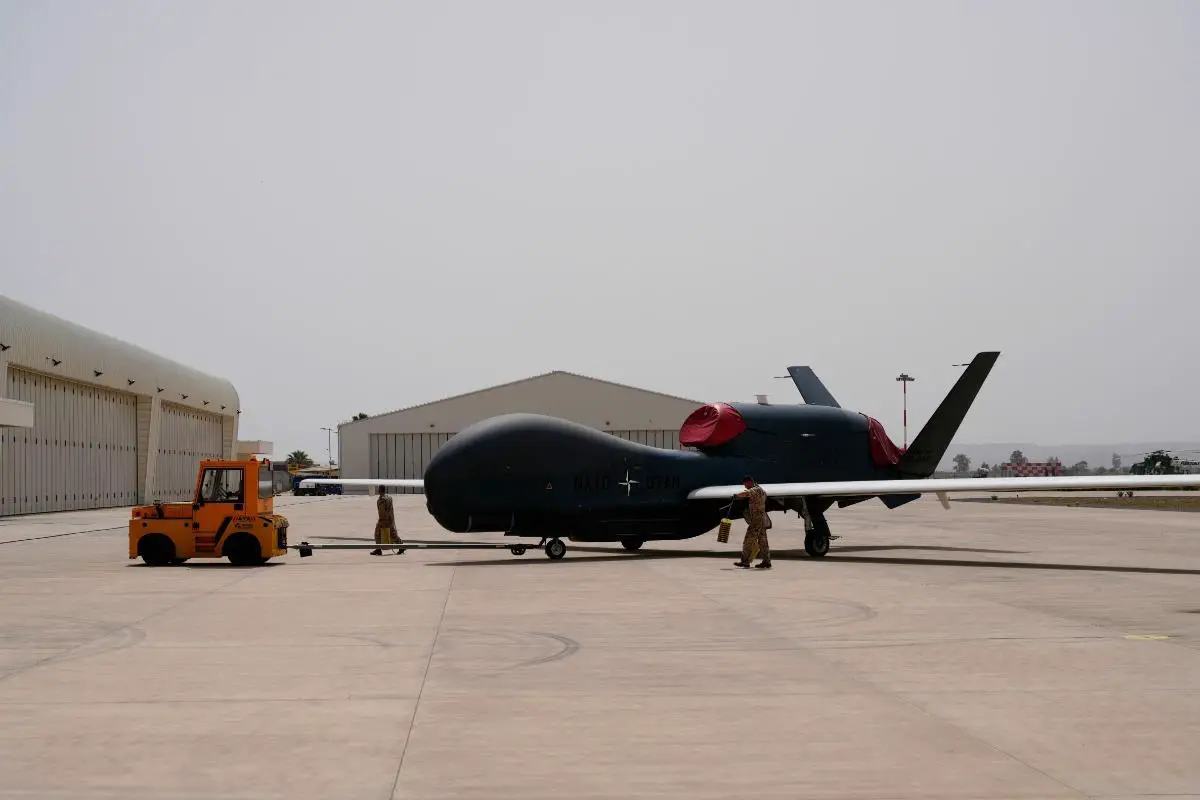The NATO Intelligence, Surveillance, and Reconnaissance Force (NISRF) has successfully completed a software update for its fleet of five RQ-4D Phoenix remotely piloted aircraft (RPA). Following comprehensive testing, all five Phoenix aircraft are now operational and conducting missions across NATO’s areas of interest. The return of the Phoenix fleet to operational status significantly bolsters NATO’s ISR capabilities. The RPAs are currently deployed on missions in both northern and southern areas of interest, providing critical information to NATO commanders and decision-makers. This successful software update demonstrates NATO’s commitment to maintaining a modern and effective ISR capability.
“The successful software update for our RQ-4D Phoenix fleet will enhance our entire ISR collection enterprise. The fleet is a critical component in our effort to deliver high-quality, decision-ready intelligence to the Alliance. This upgrade will ensure our ability to support NATO missions across the spectrum of conflict,” said Brigadier General Andrew Clark, Commander of NISRF.

The Northrop Grumman RQ-4 Global Hawk is a high-altitude, remotely-piloted surveillance aircraft introduced in 2001. Alliance Ground Surveillance (AGS) is a NATO programme to acquire an airborne ground surveillance capability (Multi-Platform Radar Technology Insertion Program on the Northrop Grumman RQ-4 Global Hawk). The NATO Alliance Ground Surveillance Force (NAGSF) was activated in September 2015, after it was formally agreed on the configuration of the unit responsible for operating the remotely piloted aircraft. The NAGSF comprises five RQ-4D Phoenix remotely piloted aircraft and the associated European-sourced ground command and control stations, and is based at AGS Main Operating Base in Sigonella, Italy.
The RQ-4D Phoenix remotely piloted aircraft plays a vital role in ensuring the Alliance’s situational awareness and ability to respond to emerging threats. These high-altitude, long-endurance platforms provide vital intelligence, surveillance, and reconnaissance (ISR) data to NATO decision-makers, supporting situational awareness and informed operations. The Alliance Ground Surveillance (AGS) system comprises air, ground, mission operation and support elements. A number of 400 AGS personnel is deployed at Sigonella. Additionally, a small number of AGS staff elements are based at Allied Command Operations in Mons, Belgium and at Allied Air Command in Ramstein, Germany.
















